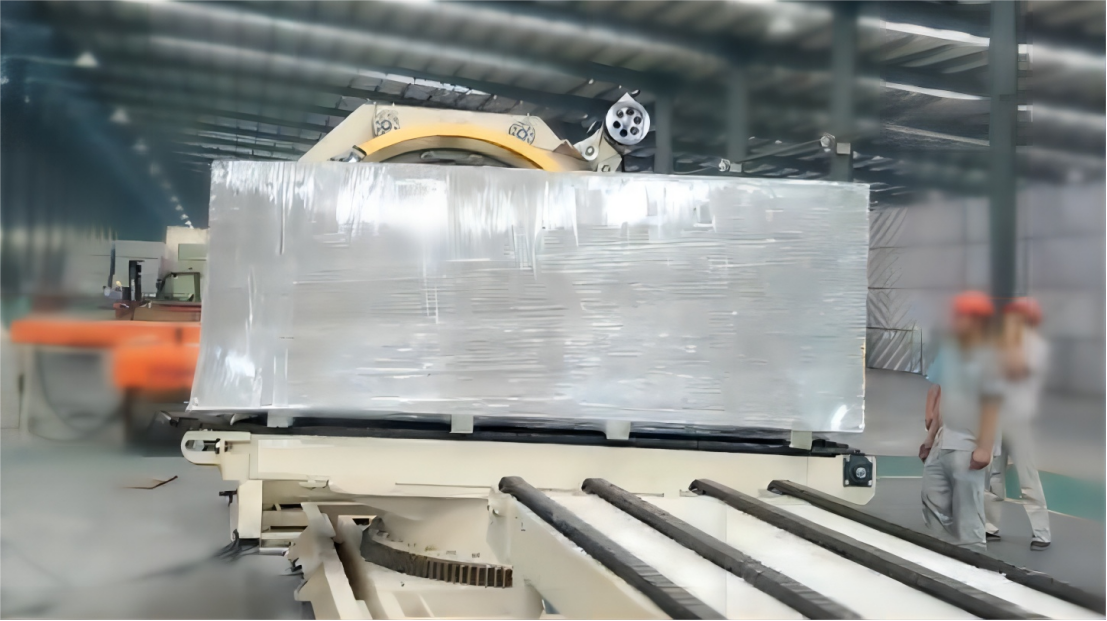Enhancing Packaging Efficiency: Horizontal Board Covering, Wrapping, and Strapping with Timber Blocks
Proper packaging is crucial for protecting horizontal boards, such as timber, panels, or planks, during storage and transit. Damage during these stages can lead to significant costs and project delays. An effective solution involves a multi-step process utilizing timber blocks, protective coverings, wrapping materials, and strapping machines to ensure stability and shield the product from environmental factors.
1. Establishing a Stable Foundation: The Timber Block

The process begins by positioning the horizontal boards onto sturdy timber blocks.
- Purpose: These blocks serve multiple functions:
- They provide a solid, elevated base, preventing direct contact with the ground and potential moisture absorption.
- They create clearance for handling equipment like forklifts, simplifying loading and unloading.
- They add structural support, minimizing the risk of bending or warping, especially for longer boards.
- Alignment: Careful alignment on the blocks ensures the stack is balanced and stable for subsequent packaging steps.
2. Applying Protective Covering
Once stacked, the boards require protection from external elements.
- Materials: Specialized covering materials, such as protective films (e.g., VCI film for corrosion inhibition) or durable sheets, are applied over the boards.
- Benefits: This layer acts as a primary shield against:
- Moisture and humidity
- Dust and debris
- Surface scratches and abrasions
- Application: The covering is carefully placed to ensure complete coverage, preserving the quality and integrity of the boards.
3. Secure Wrapping for Consolidation
With the protective covering in place, the next step is wrapping the entire bundle.
- Process: Wrapping machines typically use materials like stretch wrap or shrink wrap.
- Stretch Wrapping: Elastic polymer film is stretched and wrapped tightly around the load, using tension to hold it together.
- Shrink Wrapping: Polymer plastic film is loosely applied and then shrinks tightly over the bundle when heat is applied.
- Goal: This step tightly binds the boards together and secures them to the timber block, preventing shifting and movement during handling and transportation. This unitization simplifies logistics.
4. Reinforcing the Package with Strapping

For maximum stability and security, especially for heavier or larger loads, strapping is essential.
- Function: A strapping machine applies high-tensile straps (commonly polypropylene (PP) or polyester (PET)) horizontally and/or vertically around the wrapped bundle.
- Mechanism: The machine tensions the strap, seals it (using heat weld, friction weld, or metal seals), and cuts it. Automated systems can integrate this seamlessly into a packaging line.
- Outcome: Strapping provides crucial reinforcement, creating a strong, cohesive unit that resists separation and withstands the rigors of transit. It ensures the boards remain firmly secured to the timber block base.
Advantages of This Comprehensive Packaging Method
Employing this combination of horizontal board covering, wrapping, and the use of a strapping machine with a timber block offers several key benefits:
- Enhanced Protection: Shields boards from moisture, dirt, UV radiation (depending on materials), and physical damage.
- Improved Stability: Prevents shifting, loosening, or collapse of the stack during transport and handling.
- Increased Efficiency: Facilitates easier and safer handling, loading, and unloading using standard equipment.
- Professional Presentation: Delivers a clean, secure, and professional-looking package to the end-user.
Conclusion
The systematic process of covering, wrapping, and strapping horizontal boards on timber blocks provides a robust and reliable packaging solution. By addressing stability, protection, and handling efficiency, this method ensures that valuable board materials arrive at their destination in optimal condition, minimizing waste and maintaining product integrity throughout the supply chain.